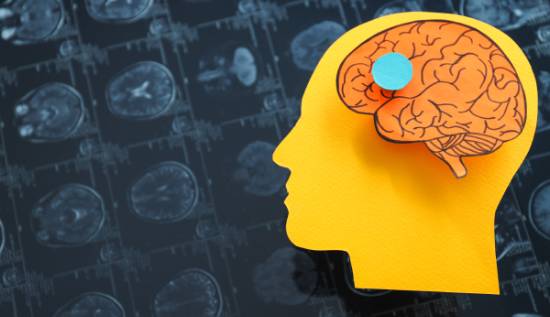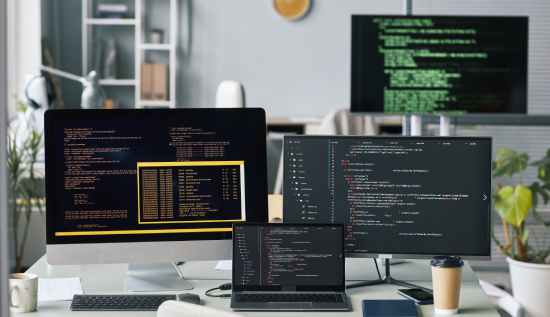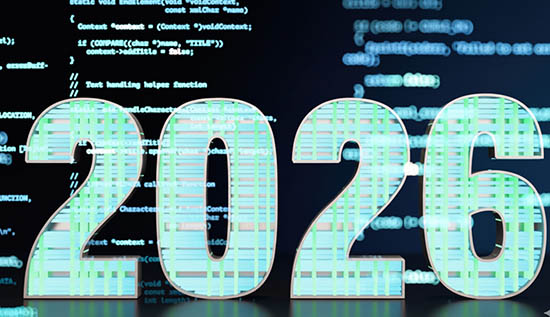What is Deep Learning and How It Works?

Deep learning in action: how it works, its types, and applications. Discover the algorithms driving generative AI and modern innovations.
Deep learning has become one of the most important tools in the world of artificial intelligence (AI), which is changing very quickly. Deep learning is at the heart of many of today's AI advances from voice helpers like Siri and Alexa to cars that can drive themselves.
But what is deep learning and how does it work? We will talk about the basics of deep learning, how it works, the role of neural networks, the different types of deep learning, their uses, and how they power generative AI in this article.

What is Deep Learning?
The goal of deep learning in machine learning is to teach artificial neural networks how to do hard jobs by giving them a lot of data. Deep learning models learn how to organize data hierarchically on their own, while with traditional machine learning methods, you often have to manually pull-out features.
Because of this, they are very good at jobs like speech recognition, image recognition, and natural language processing.
When you talk about deep learning, "deep" refers to the many layers (or depth) of neural networks that are used to handle data. With these layers, the model can learn features that are more and more abstract, which lets it solve very difficult tasks.
Difference Between Machine Learning and Deep Learning
Deep learning is a part of machine learning but there are some important changes between the two:
- Feature Extraction: In standard machine learning, engineers have to pick out features from the data by hand. In deep learning, these traits are picked up by the model straight from the data.
- Requirements for Data: Deep learning models need a lot more data than other types of machines learning to work well. This is because a lot of different things need to be taught to deep learning models.
- Computational Power: Deep learning models need a lot of computing power and often need specific hardware for training, such as GPUs (Graphics Processing Units) or TPUs (Tensor Processing Units).
Performance: Deep learning usually does better than standard machine learning when working with unstructured data like images, audio, and text. On the other hand, standard machine learning algorithms might work better with smaller datasets or structured data.
Neural Networks and Deep Learning
Neural networks and deep learning, People who study how the brain works and is made get them. There are groups of nodes, which are also known as neurons, in a neural network. These neurons are all connected to each other and also can send and receive messages.
Key Components of Neural Networks:
- Input Layer: The first layer that gets raw data is the input layer. This could be pixels of a picture or words in a sentence.
- Hidden Layers: These are the layers in between the incoming data and the higher-level features they create. The "depth" of these levels is what makes a neural network "deep."
- Output Layer: This is the last layer that makes the result such as an estimate or classification.
The neural network changes the weights of its links during training to make the difference between what it predicted and what actually happened as small as possible. This is called backpropagation and it is a very important part of how deep learning works.
Types of Deep Learning
There are several types of deep learning architectures, and each one is best for a different job:
- Convolutional Neural Networks (CNNs): These are mostly used to process images and videos. CNNs use convolutional layers to find patterns in space, such as lines, shapes, and textures.
- Recurrent Neural Networks (RNNs): Made to handle linear data, like text or time series. That's why RNNs are great for jobs like translating languages: they have memory cells that let them remember what they learned in different steps.
- Generative Adversarial Networks (GANs): Made up of two neural networks that fight with each other. These networks are called a generator and a discriminator. In generative AI, GANs are often used to make pictures, videos and sounds that look and sound real.
- Transformer Networks: Newer design that has changed the way natural language processing (NLP) is done. Transformers use self-attention to handle input data at the same time, which makes them very good at jobs like creating texts and summarizing them.
- Autoencoders: Used for tasks like dimensionality reduction and anomaly identification that don't need to be supervised. Autoencoders learn how to take data, compress it into a model with fewer dimensions and then put it back together again.
Applications of Deep Learning
There are applications of deep learning can be used in many different fields. Here are some examples that stand out:
- Computer Vision: Computer vision jobs like finding objects, recognizing faces, and looking at medical images are powered by deep learning.
- Natural Language Processing (NLP): Chatbots, mood analysis and machine translation are all uses of NLP.
- Speech Recognition: Deep learning is what helps voice assistants such as Siri and Alexa understand and also follow spoken orders.
- Autonomous Vehicles: Deep learning is used by self-driving cars to understand sensor data and also make choices about how to drive in real time.
- Healthcare: Deep learning is used to find new drugs, diagnose diseases and make custom medicines.
- Finance: It can be used to find fraud, do algorithmic trade and score credit.
What Type of Deep Learning Algorithms Are Used by Generative AI?
This area of AI is called "generative AI," and its main goal is to make new material such as pictures, music and text. These are the deep learning algorithms that are most often used in generative AI:
- Generic Adversarial Networks (GANs): As we already said, GANs are made up of a generator and a discriminator. The discriminator checks to see if the new data is real while the generator makes it. The products of this adversarial process are very realistic.
- Variational Autoencoders (VAEs): you can make new data points that are such as the training data. Creating images and adding to data are two common ways to use them.
- Transformer networks: These are the building blocks of many creative AI models especially in natural language processing (NLP). One example is OpenAI's GPT (Generative Pre-trained Transformer) series, which can write text that sounds like it was written by a person.
- Diffusion Models: Younger type of generative models that make data by improving random noise over and over again. Diffusion models are becoming more famous because they can make good images.
How Deep Learning Works
To understand how deep learning works you need to break down the training process into these important steps:
- Data Collection: An important first step is to collect a lot of different types of data that are relevant to the job at hand.
- Data Preprocessing: The raw data is cleaned up and organized to make sure it is consistent. Some of the things that can be changed are picture sizes and text tokenization.
- Model Choice: Based on the job, the right deep learning architecture is picked out, such as CNN, RNN or GAN.
- Training: The model is taught by giving it data that has already been cleaned up. Backpropagation is used by the model to change its weights during training to reduce mistakes.
- Validation: The model's performance is checked on a different set of data to make sure it works well with new data.
- Testing: To see how well it works in the real world the end model is tested on a dataset that has never been seen before.
- Deployment: After the model has been trained and also proven to work it is put to use to do its job, like sorting pictures into groups or writing text.
Conclusion
Artificial intelligence has changed a lot because of deep learning. It lets computers do things that humans were thought to be the only ones who could do. Deep learning models can learn complicated patterns and also make very accurate predictions by using neural networks and deep learning. The difference between machine learning and deep learning in how they identify features, how much data they need, and also how hard they are to compute.
Deep learning keeps pushing the limits of what is possible. CNNs and GANs are two types of deep learning that are used in a wide range of fields, including healthcare, finance, and also entertainment. In the field of generative AI, new types of material are being made all the time from realistic images to text that looks and sounds like it was written by a person.
Figuring out how deep learning work can help you understand the future of AI and how it might change businesses. Deep learning will definitely play an even bigger role in changing our world as technology gets better.
Read More: Artificial Intelligence in Cambodia: Advancing Education and Security
More Articles
 15 Dec 2025
15 Dec 2025
Full-Stack vs Backend vs Frontend: Which Path to Choose?
Full-Stack vs Backend vs Frontend: Compare roles, skills, responsibilities, and salaries to see which software development path fits your career goals.
 12 Dec 2025
12 Dec 2025
Top Programming Languages to Learn in 2026
Updated overview of top programming languages to learn in 2026 focused on growth potential, developer pathways, industry needs and real applications.
 11 Dec 2025
11 Dec 2025
Deep Learning Video Editing: AI-Powered Post-Production
Deep learning video editing brings advanced automation and AI precision to modern post-production, giving creators smoother, smarter ways to shape video content.
 10 Dec 2025
10 Dec 2025
Latest Freelancing Trends in Technology for Remote Work
Stay ahead in remote work with insights on Freelancing trends in technology, top skills and global technology freelance opportunities.